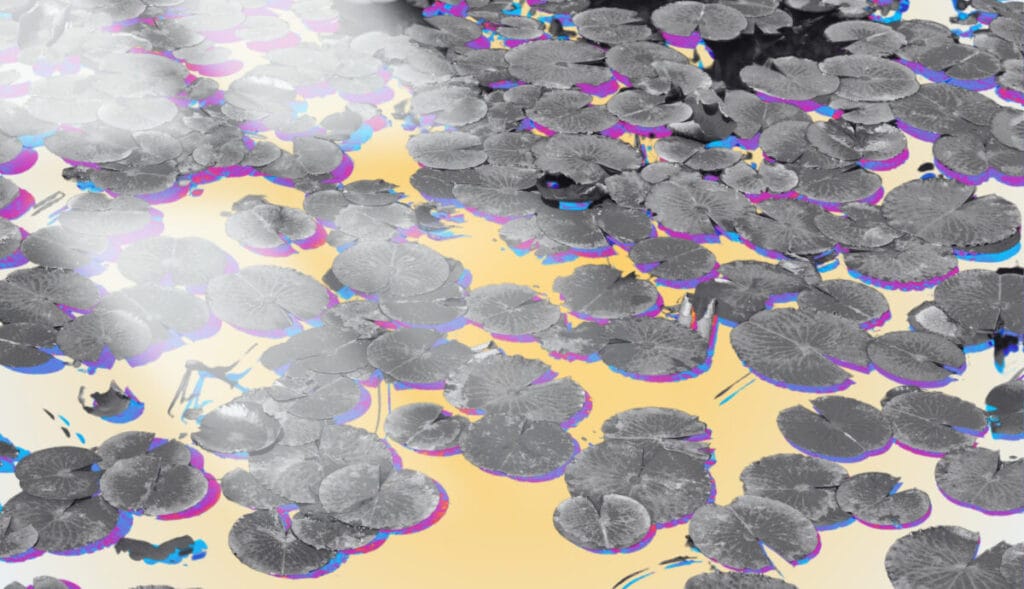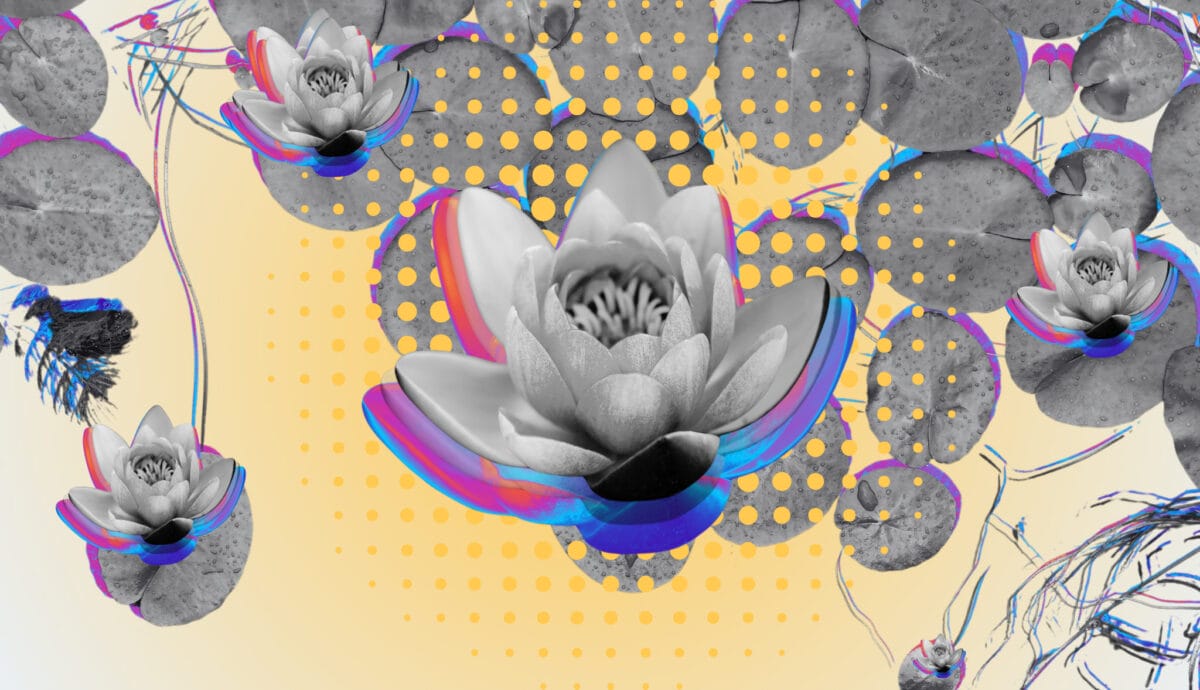Psychedelics on their own can’t save people from chronic depression. Therapists alone can’t do it either. However, entheogens can spark the journey toward wholeness, and skilled psychedelic integration therapy can illuminate the path forward.
How is this made possible? The key is to align modern clinical interventions with the transformative experiences psychedelic substances elicit. And to view psychedelic integration therapy through a holistic lens that addresses the interconnectedness of existence.
What is Psychedelic Integration Therapy?
Indigenous communities worldwide have been integrating psychedelic experiences through diets, prayer, song, and communal gatherings for hundreds – and maybe even thousands – of years. However, structured psychedelic integration therapy is a novel practice that Western clinicians are experimenting with in real time. Loosely defined, psychedelic integration therapy is the diverse process where practitioners support patients in their pursuit to transform non-ordinary experiences into positive, lasting change.
Patients need this support because psychedelics themselves do not cure depression, contrary to conspicuous headlines. More often than not, high-dose psilocybin, ayahuasca, and LSD journeys shine a light on the areas where people are stuck, and shift the brain’s normal functioning in such a way that they can see a road out.
Psychedelic consumption then opens a brief window of neuroplasticity where patients can reframe past traumas and develop new, healthy habits. This period of heightened cognitive flexibility allows therapists to assist clients in harnessing their experiences for enduring transformations, whether simple or challenging.
Integration therapy’s primary goal is to maximize the benefits of uplifting journeys and minimize harm in distressing journeys.
- Maximize Benefits: Patients who intentionally consume psychedelics with an open mindset in a safe environment (set and setting) typically have awe-inspiring experiences that radically shift their perspectives. Many people experience an “afterglow” in the days, weeks, and months following. But psychedelic experiences can still become a distant memory, and depression symptoms can reoccur. So, psychedelic integration therapy seeks to engrain the lessons in the patient’s psyche for a lifetime ahead.
- Minimize Harm: Psychedelics are non-specific amplifiers, which means they intensify thoughts, feelings, and perceptions in unpredictable ways that are highly individual. For some people, the experience is uncomfortable and even re-traumatizing, causing adverse psychological symptoms afterward. In these scenarios, integration therapy’s first goal is to relieve the patient’s distress and prevent long-term damage. Subsequently, therapists can try to help patients reframe their negative perceptions and find nuggets of insight that guide productive exploration.

Key Aspects of Integration
Psychedelic integration encompasses several steps that can vary from one practitioner to the next. However, research indicates the process universally falls into two core subdomains: reflection and application.
The reflection subdomain involves the internal process of contemplating and making sense of the psychedelic experience. It is a period of introspection where clients examine the symbolic, emotional, psychological, and spiritual content. Through reflection, clients connect aspects of their experience with their lives, deriving meaning and understanding from what they have encountered.
The application subdomain pertains to external actions that incorporate psychedelic insights and lessons into daily life. Application involves changing behavior, lifestyle, and relationships based on newfound understanding and awareness. This can include adopting healthier habits, altering one’s approach to interpersonal relationships, or making career or personal life changes that align more closely with one’s values and aspirations.
According to the findings, reflection and application hold the same significance for integrating psychedelic experiences as set and setting do for ensuring those experiences are positive.Discover the eight steps of integration in the Navigating Psychedelics for Clinicians and Wellness Practitioners course.

Psychotherapeutic Integration Models
Psychedelic integration does not necessarily require therapeutic intervention. However, clinical psychedelic therapy trials employ models like Acceptance and Commitment Therapy (ACT) and the Accept, Connect, Embody Model (ACE). Many also incorporate mindfulness practices and Internal Family Systems (IFS) to support effective integration. All modalities focus on flexibility, awareness, internal harmony, and channeling unconscious processes into conscious understanding.
Acceptance and Commitment Therapy
A 2020 psilocybin-assisted therapy paper proposed Acceptance and Commitment Therapy (ACT) for integration due to its efficacy in treating depression and for its alignment with psychedelic experiences.
ACT synergizes with psilocybin therapy because both emphasize psychological flexibility and living a conscious life rather than symptom reduction. ACT utilizes six central tenets of psychological flexibility: present-moment focus, acceptance, self-as-context, cognitive defusion, valued direction, and committed action. Psilocybin therapy enhances these processes by facilitating present-moment awareness, surrendering to experiences, fostering ego dissolution, exploring values, and providing a window of opportunity for behavior change during the afterglow period.
As the integration process begins, the ACT frame suggests that therapists patiently listen to clients share their experiences without immediately applying therapeutic techniques. Gradually, therapists identify and draw parallels between the client’s experiences and ACT principles.
Through tools like the Valued Living Questionnaire, clients clarify their values and consider how their lives align with or diverge from them. Using the ACT Matrix, participants plan specific actions to live more by their values, guided by insights from their psychedelic experiences. Follow-up sessions assess changes in psychological flexibility and reinforce ACT concepts, ensuring participants can apply their insights and maintain behavioral changes.
Accept, Connect, Embody Model
The Accept, Connect, Embody Model (ACE) follows a similar structure to ACT but with an intuitive shift.
Dr. Rosalind Watts and Dr. Jason Luoma introduced ACE for integrating psychedelic experiences into therapeutic practice. It is based on clinical experience and data from psilocybin trials, which highlight acceptance and connection as critical components of positive therapeutic outcomes.
The ACE model utilizes ACT’s six processes of psychological flexibility but reorganizes them into an acceptance triad (defusion, present moment focus, willingness) and a connection triad (self as context, values, committed action). It emphasizes the importance of accepting challenging experiences, connecting to positive aspects, and deeply embodying these experiences through somatic engagement.
ACE helps prepare clients for psychedelics and integrates their experiences afterward in three stages.
Stage One: Pulling Together the Narrative
Patients share their psychedelic experiences freely while therapists facilitate understanding and validation, fostering trust for a deeper exploration.
Stage Two: Distilling Key Insights
Therapists help patients identify vital lessons from their experiences, linking these insights to personal values and life goals in a structured reflection process.
Stage Three: Supporting Behavior Change
In this proactive phase, therapists guide patients in applying their psychedelic insights to concrete actions, supporting them in navigating challenges and changes.

Mindfulness-Based Interventions
Mindfulness-based interventions are less established than ACE and ACT in psychedelic trials. However, they play a role in nearly all integration frameworks, offering synergies that scientists suggest can inform clinical practice.
Mindfulness refers to deliberately paying attention to the present moment with curiosity and without judgment. Therapeutic frameworks include Mindfulness-Based Stress Reduction (MBSR) and Mindfulness-Based Cognitive Therapy (MBCT).
The synergy between mindfulness and psychedelics lies in their common effects and the unique ways they complement each other in therapeutic settings. Both can increase awareness, interconnectedness, and alterations in the brain’s default mode network.
Researchers use the compass and vehicle metaphor to describe the synergy:
“… the Compass of psychedelics may serve to initiate, motivate, and steer the course of mindfulness practice; conversely, the Vehicle of mindfulness may serve to integrate, deepen, generalize, and maintain the novel perspectives and motivation instigated by psychedelics.”

Internal Family Systems
Internal Family Systems (IFS) is another therapeutic model gaining traction in psychedelic therapy. The approach offers a non-pathologizing, systems-oriented lens for integrating psychedelic experiences.
Internal Family Systems (IFS) operates on the premise that the mind is naturally multiple and that each person has a core self surrounded by various parts with distinct roles, feelings, and perspectives. According to Nancy L. Morgan, MS, PhD., IFS is particularly effective for psychedelic integration because it acknowledges the complexity and multiplicity of the psyche, mirroring the often multifaceted nature of psychedelic journeys.
For integration therapy, IFS facilitates a process where clients learn to recognize and understand their parts, especially those activated or revealed during a psychedelic experience. The core self is seen as inherently possessing compassion, curiosity, calm, clarity, courage, connectedness, confidence, and creativity. Therapists guide clients to embody these qualities, enabling them to engage with their parts in a healing and constructive manner.
By applying the IFS model to psychedelic integration, therapists provide a structured yet flexible framework that honors the client’s internal diversity.
Psychotherapeutic Limitations
Clinical data and academic inquiry provide useful psychedelic integration theories. However, research doesn’t empirically endorse any single protocol. Additionally, centuries of Indigenous psychedelic use indicate integration is not merely a psychoanalytical, behavioral, or even somatic approach to fixing a specific problem.
A more inclusive view of psychedelic integration reveals that the process can be a way of life. Integration doesn’t occur in distinct phases in Indigenous cultures. It happens through ongoing community rituals to foster harmony and alignment.
Integration, then, is about more than processing the psychedelic experience or overcoming specific difficulties, even if the experience might catalyze healing. It is about bringing peace to one’s whole existence, including physiological, spiritual, and social.
In certain cultures, integration practices encompass shamanic rituals, hypnosis, drumming, and chanting. In the West, they might look like walks in nature, dream journaling, volunteering, asking for help, and gratitude work.
Regardless of the cultural context, one aspect is clear: integration requires a comprehensive approach that goes beyond the therapeutic alliance.
The Synthesized Integration Model
To address the need for a comprehensive psychedelic integration framework, researchers developed the Synthesized Model of Integration. The model draws from holistic, Indigenous, and psychotherapeutic approaches to create a more balanced definition.
This model incorporates six interconnected domains of existence: mind/cognitive/emotional, bodily/somatic, spiritual/existential, natural world, relational/communal, and lifestyle/action. It suggests a balanced approach to integration, where an individual actively engages in practices across these domains to incorporate insights from their psychedelic experiences.
Holistic practices include engaging with nature, joining supportive communities, working with seasoned psychedelic guides, personal contemplation, and physical and spiritual practices — all of which extend beyond the boundaries of integration therapy sessions.

6 Psychedelic Integration Truths Every Practitioner Must Know
Western practitioners who seek to dive into the vast waters of psychedelic integration therapy must absorb an enormous swath of knowledge distilled into six simple truths.
1. Therapists need psychedelic knowledge and meta-skills: Practical integration guidelines indicate that psychedelic therapists must understand psychedelic effects, practice empathy, foster self-awareness, uphold ethics and master complementary techniques. Courses like Navigating Psychedelics for Clinicians and Wellness Practitioners are great places to start, providing psychedelic history, harm reduction, clinical applications, and space-holding skills for healers of all experience levels.
2. Integration is a patient-led experience: The American Psychedelic Practitioner’s Association highlights integration as a process primarily directed by the patient. This approach respects the patient’s autonomy and unique process of making sense of their psychedelic experiences. Therapists facilitate this approach by offering support, resources, and guidance rather than directing it.
3. Patients may not have concrete goals: Practitioners must be comfortable navigating the therapeutic process without concrete goals, acknowledging that the nature of psychedelic experiences and their integration can be fluid and evolving. This flexibility allows for a more organic and meaningful therapeutic journey.
4. Integration is a lifelong practice: Clinical trials may be finite, but psychedelic integration does not have a tangible limit. Therapists must acknowledge that integration is not a one-time event but a continuous process of incorporating insights and changes into one’s life.
5. Success is undefined, but tools exist to help gauge it: Psychedelic integration success is not strictly defined. However, emerging tools, like the Integration Engagement Scale (IES) and the Experienced Integration Scale (EIS), can help therapists evaluate patient progress. Clinicians and clients can use these scales to measure psychological well-being, life satisfaction changes, and specific symptomatology reductions to assess the impact of integration efforts and make changes as necessary.
6. Meaning-making is not confined to therapy settings: The process of constructing meaning from psychedelic experiences extends beyond the therapy room. It involves engaging in activities that reinforce and deepen the insights gained, such as journaling, meditation, and artistic expression. Therapists must encourage clients to engage in these diverse practices.
The Bottom Line
Successful integration is a patient-led, lifelong practice harnessing therapeutic techniques while extending beyond clinical sessions. With intelligent, compassionate integration therapy, psychedelic explorers can resolve mental health concerns while moving toward greater balance in every aspect of life.
Enhance your professional toolkit with ‘Navigating Psychedelics For Clinicians and Wellness Practitioners‘ from Psychedelics Today.


